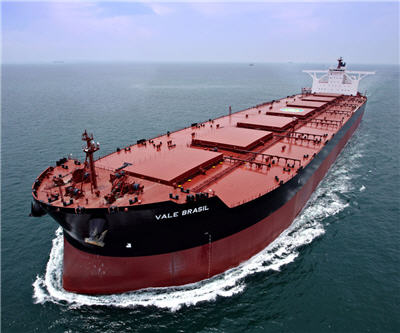
The resilience of the iron ore trade in the face of rising supply and slowing growth in its number one market China has surprised many market observers.
The benchmark CFR import price of 62% iron ore fines at China’s Tianjin climbed to $131.70 a tonne on Tuesday, up 19% from levels reached this time last year according to data provided by SteelIndex.
While the price of the steelmaking ingredient has so far defied predictions of a slump, producers are now warning that the price probably cannot hold up for much longer.
Brazilian giant Vale’s head of Ferrous & Strategy Jose Carlos Martins on Tuesday gave some valuable insights into where the world number one iron ore miner thinks the market is heading:
Vale’s $20 billion Carajas-complex expansion (S11D) which could bring an additional 90 million tonnes to market in late 2016 is a big part of the flood of new supply coming to market in the medium term, but the Brazilian company is by no means alone in cranking out new capacity.
The industry’s other big producers – Rio Tinto (LON:RIO), Fortescue Metals Group (ASX:FMG) and BHP Billiton (LON, ASX: BHP) – continue to ramp up production in Australia.
Number two iron ore producer Rio is injecting a further $5 billion into its Pilbara operations to take annual capacity to 360 million tonnes, closing the gap with Vale.
Despite delays Rio and Chinese partner Chalco also remain committed to the Simandou iron ore project in Guinea which has name-plate capacity of 95 million tonnes per year and which could come on stream by 2018.
Outside the top four activity is also picking up.
Even much maligned projects such as Anglo American’s 26 million tonnes per year Minas Rio in Brazil will kick into gear next year and Citic Pacific’s massive Sino Iron project in Australia finally went into production last week.
Smaller players in West Africa are bringing projects on stream faster than the majors and Gina Rinehart’s $10 billion, 55 million tonnes per annum Roy Hill project may also start producing by 2015.
A wild card is India, which has seen exports fall from 120 million tonnes to close to zero over the last few years. The country, desperate for foreign exchange, has been lifting its self-imposed ban on iron mining and could be adding to world supply again over the coming years.
The biggest losers in this scenario are not exporters however.
Chinese iron ore miners will suffer the most damage as prices retreat and new supply come on stream. Most Chinese iron ore mines are small – less than a million tonnes per year – and marginal costs within the industry are north of $140.
$120 a tonne has become something of a rule of thumb among iron ore producers – when prices stay below this level for long enough high cost mines, particularly those in China, become unprofitable leading to cuts in supply and a rebound in the price.
This dynamic will remain at work in the iron ore market through 2020, but with so much new capacity that rule of thumb may now have to be adjusted lower.